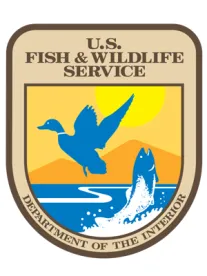On May 6, 2016, the U.S. Fish and Wildlife Service (“Service”) published a proposed rule that would amend various aspects of its permitting program under the Bald and Golden Eagle Protection Act (“Eagle Act”). As widely anticipated, the proposed rule seeks to extend the maximum permit term from five to thirty years, but it also creates more stringent conservation standards and more flexible mitigation requirements for permits. The comment period for the proposed rule ends on July 5, 2016.
Along with the proposed rule, the Service also released a status report, which showed increases in bald eagle populations but possible declines in golden eagle populations; and a Draft Programmatic Environmental Impact Statement (DPEIS), which analyzed potential impacts of the proposed rule under NEPA and which the Service intends to use as the basis for tiered, subsequent project-level review.
Background
The Eagle Act was enacted in 1940 and prohibits the “take” of bald and golden eagles. Take is defined broadly to include activities that “disturb” eagles or impacts to their nests or eggs. In 2009, the Service issued regulations authorizing issuance of two new permits under the Eagle Act: one for take (removal, relocation, or destruction) of eagle nests in limited circumstances; and the second for non-purposeful take (disturbance, injury or killing) of eagles. Both permits had a maximum term of five years. On December 9, 2013, in part to facilitate development of wind energy projects, the Service amended its regulations to extend the maximum term of non‑purposeful take permits to thirty years for activities that could result in recurring take, such as operation of wind turbines. These permits were referred to as “programmatic” permits. Activities that would result in take only once were covered under a “standard” non-purposeful take permit which was valid for a five-year term. Programmatic permits required applicants to implement advanced conservation practices that utilized the best available techniques to reduce impacts to a level where remaining take was “unavoidable.” Standard permits required only that applicants reduce potential take to a level where it was “practicably unavoidable.”
Conservation groups unhappy with the longer term of the programmatic permits challenged the 2013 rule, which was invalidated in 2015 by the U. S. District Court for the Northern District of California. The court held that before extending the permit term to thirty years, the Service should have prepared an environmental assessment (EA) or environmental impact statement (EIS). See Shearwater v. Ashe, 2015 U.S. Dist. LEXIS 106277 (N.D. Cal., Aug. 11, 2015). Consequently, the maximum term of all Eagle Act permits reverted to five years.
Thirty-Year Term for Incidental Take Permits
The key revision contemplated in the proposed rule is the extension of the term of a permit issued under the Eagle Act to a maximum of thirty years. The Service asserts that the existing five-year term is “unnecessarily burdensome” for entities that participate in long-term activities that may incidentally take bald or golden eagles and that such entities may be discouraged from even applying for an Eagle Act permit and, instead, risk violating the Act. According to the Service, a longer permit term would encourage entities to apply for permits and allow the Service to set and monitor conditions for the permit. This would also allow applicants to understand what measures they would need to undertake to maintain their coverage.
However, the Service also proposes to conduct periodic review of permits issued with the longer term to “reassess fatality rates, effectiveness of measures to reduce take, the appropriate level of compensatory mitigation, and eagle population status.” These evaluations, which would be carried out at least once every five years, would provide a basis for the Service to require additional conservation measures if it found that eagles were not adequately protected.
The new rule also proposes to consolidate the two current types of “non-purposeful” take permits—the programmatic (recurring take) permit and standard (one-time take) permit—into one “incidental take permit” to avoid confusion and streamline the permitting process. The Service also proposes to eliminate the requirement to implement advanced conservation practices that were required as part of the programmatic permitting program before it was invalidated. Instead, under the new incidental take permit, all applicants would be required to reduce potential take to the “practicably unavoidable” standard. Borrowing from the EPA’s long‑established definition of “practicable” in the Clean Water Act’s Section 404(b)(1) guidelines, the Service defines the term to require entities to take any measures “available and capable or being done after taking into consideration existing technology, logistics, and cost in light of a mitigation measure’s beneficial value to eagles and the activity’s overall purpose, scope, and scale.”
The proposed rule would also increase permit fees. Commercial applicants would be required to pay $2,500 (an increase from the $1,000 fee for programmatic permits and $500 for the standard permits) for five-year terms, and a $36,000 for terms greater than five years. The latter term would also have a $15,000 Administrative Fee every five years to cover the cost of the Service conducting the evaluation.
Heightened Preservation Standard and Increased Take Limits
The permitting program adopted in 2009 implemented the Eagle Act’s preservation standard by requiring the Service, in issuing take permits, to manage eagles “consistent with the goals of maintaining stable or increasing breeding populations.”
Consistent with previously issued (but non-binding) guidance, the proposed rule would increase protections to local area populations (LAP). Under the proposed rule, the Service would carry out its incidental take permitting: “consistent with the goals of maintaining stable or increasing breeding populations in all eagle management units and persistence of local populations throughout the geographic range of both species.” There are four eagle management units (EMU) that follow the migratory flyways in North America. The proposed rule also establishes 2009 as the baseline population and requires evaluation of persistence over a 100-year period.
The Service indicates that the purpose of the focus on local populations is to ensure that bald and golden eagle populations will persist “over the long term with sufficient distribution to be resilient and adaptable to environmental conditions, stressors, and likely future altered environments.”
The Service proposes to increase the level of take for bald eagles, based in part on data collected in the Status Report, which shows increasing populations of bald eagles. The annual take limit for bald eagles is proposed to increase to 4,200 nationwide, with the additional limitation of cumulative take of up to 5% of a LAP. Applicants will be required to submit an LAP analysis, and an exceedance of the 5% limit would be authorized only if the losses are offset through compensatory mitigation.
No increase in take limits are proposed for the golden eagle, as the Status Report indicates that populations of this species may be in decline. The take limit for the golden eagle remains at net zero, meaning that compensatory mitigation is necessary to offset any authorized take “at a greater than one-to-one ratio to achieve a net benefit to golden eagles to achieve an outcome consistent with the preservation of golden eagles as the result of the permit.”
More Options for Compensatory Mitigation
To date, power pole retrofits had been the only form of compensatory mitigation. Under the proposed rule, conservation banks and in-lieu fee programs could be established. Other mitigation proposals—similar to permittee‑responsible mitigation under the Corps and EPA’s Clean Water Act mitigation rule—could also be considered. Mitigation should be located within the LAP, although the Service would also consider mitigation outside the LAP but within the EMU. As noted above, compensatory mitigation would be required for both project-specific take and for exceedances of the 5% LAP take threshold, and compensatory mitigation (and the need for additional avoidance) would be re-evaluated during each period review for long-term permits.
Conclusion
The changes in the proposed rule constitute a significant revision to the Eagle Act permitting program and, in general, are likely to be welcomed by applicants. However, the amendments would come with some heightened conservation standards and introduce some uncertainty for holders of long-term permits.
Khyati DalaI is co-author of this article.



 />i
/>i

